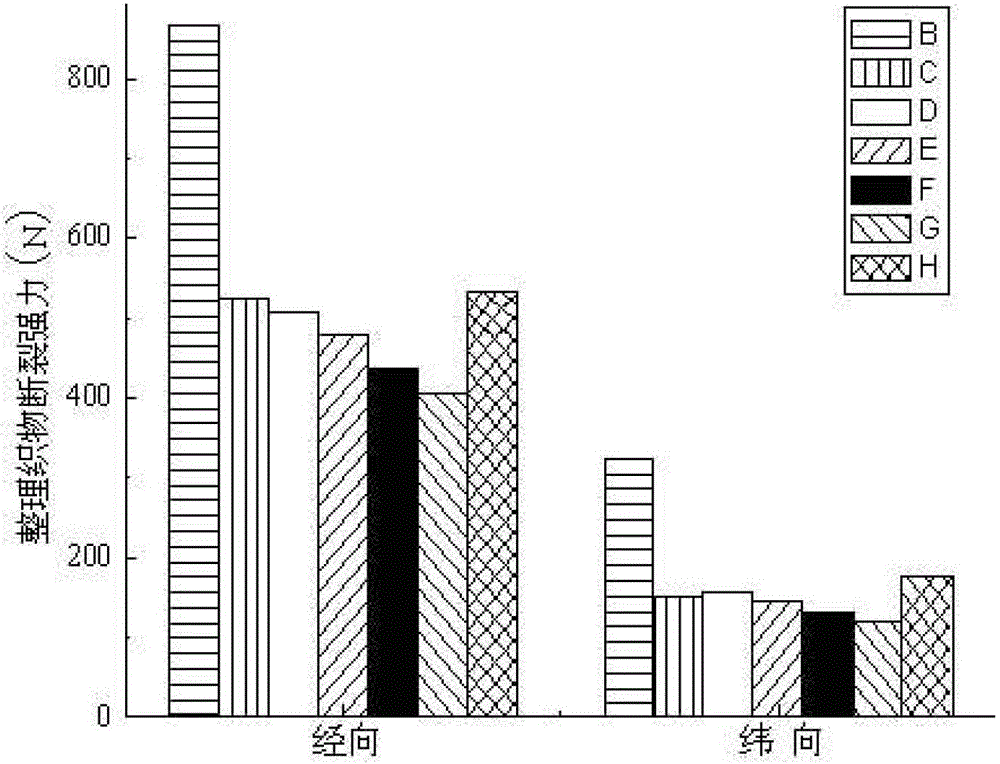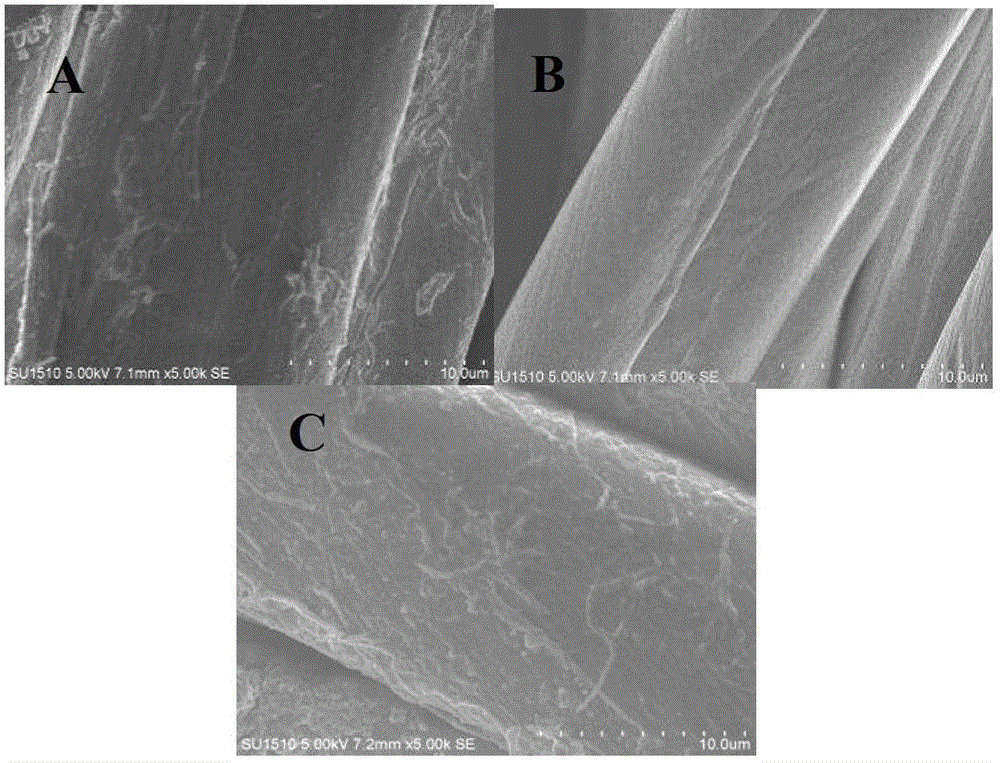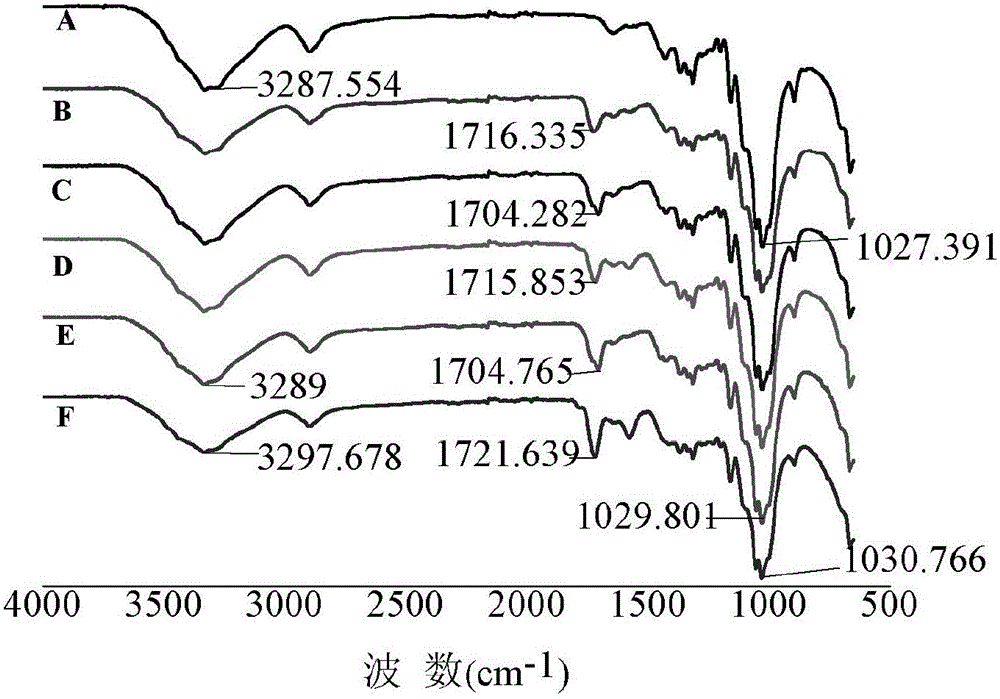Preparation method of dihydroxy halamine compound/Nano-TiO2 ultraviolet-resistant antibacterial cotton fabric
A nano-titanium dioxide, bishydroxyhalamine technology, applied in plant fibers, textiles and papermaking, fiber processing and other directions, can solve problems such as affecting the wearability of fabrics, poor UV stability, and reduced tensile breaking strength of fabrics, reaching important industrial Application value, superior lasting antibacterial properties, simple process operation effect
- Summary
- Abstract
- Description
- Claims
- Application Information
AI Technical Summary
Problems solved by technology
Method used
Image
Examples
Embodiment 1
[0033] Bishydroxyhalamine compound / titanium dioxide (TiO 2 ) finishing liquid preparation:
[0034] Add anatase titanium dioxide powder with a final concentration of 5wt% to the water, stir mechanically for 5 minutes, place it in an ultrasonic oscillator for 5 minutes, then add nonionic surfactant JFC with a final concentration of 0.5g / L, and butane with a final concentration of 4wt%. Tetracarboxylic acid BTCA, sodium hypophosphite SHP with a final concentration of 5wt%, continued ultrasonic oscillation for 10min, and finally added 3-(2,3-propanediol)-5,5-dimethylimidazolidine-2 with a final concentration of 3wt%, 4-diketone, that is.
[0035] Bishydroxyhalamine compound / titanium dioxide (TiO 2 ) finishing process:
[0036] Take cotton fabric (133×72 / 40 S ×40 S , Zhejiang Guandong Printing and Dyeing Clothing Co., Ltd.) one part is immersed in the above finishing solution for 10 minutes, two dipping and two rolling, and the rolling rate is 100%. Take out the fabric, put i...
Embodiment 2
[0038] Bishydroxyhalamine compound / titanium dioxide (TiO 2 ) finishing liquid preparation:
[0039] Add rutile nano-titanium dioxide powder with a final concentration of 5wt% to water, mechanically stir for 5min, place in an ultrasonic oscillator for 10min ultrasonic oscillation, then add nonionic surfactant JFC with a final concentration of 1g / L, and butane tetrachloride with a final concentration of 5.7wt%. Carboxylic acid BTCA, sodium hypophosphite SHP with a final concentration of 6wt%, continue ultrasonic oscillation for 20min, and finally add 3-(2,3-propanediol)-5,5-dimethylimidazolidine-2,4 with a final concentration of 5wt% - diketone, ie.
[0040] Bishydroxyhalamine compound / titanium dioxide (TiO 2 ) finishing process:
[0041] Take a portion of the cotton fabric (same as above) and soak it in the above finishing solution for 15 minutes, dipping twice and rolling it twice, and the excess rate is 100%. Take out the fabric, put it in an oven and dry it at 100°C for 5 m...
Embodiment 3
[0043] Bishydroxyhalamine compound / titanium dioxide (TiO 2 ) finishing liquid preparation:
[0044] Add rutile nano-titanium dioxide powder with a final concentration of 2wt% to the water, mechanically stir for 5 minutes, place it in an ultrasonic oscillator for 20 minutes, then add nonionic surfactant JFC with a final concentration of 1g / L, and butane tetracarboxylate with a final concentration of 7wt%. Acid BTCA, sodium hypophosphite SHP with a final concentration of 10wt%, continued ultrasonic oscillation for 30min, and finally added 3-(2,3-propanediol)-5,5-dimethylimidazolidine-2,4- Diketone, that is.
[0045] Bishydroxyhalamine compound / titanium dioxide (TiO 2 ) finishing process:
[0046] Take a portion of the cotton fabric (same as above) and soak it in the above finishing solution for 15 minutes, dipping twice and rolling it twice, and the excess rate is 100%. Take out the fabric, put it in an oven and dry it at 100°C for 5 minutes, and then put it in a baking machi...
PUM
 Login to View More
Login to View More Abstract
Description
Claims
Application Information
 Login to View More
Login to View More - R&D
- Intellectual Property
- Life Sciences
- Materials
- Tech Scout
- Unparalleled Data Quality
- Higher Quality Content
- 60% Fewer Hallucinations
Browse by: Latest US Patents, China's latest patents, Technical Efficacy Thesaurus, Application Domain, Technology Topic, Popular Technical Reports.
© 2025 PatSnap. All rights reserved.Legal|Privacy policy|Modern Slavery Act Transparency Statement|Sitemap|About US| Contact US: help@patsnap.com



